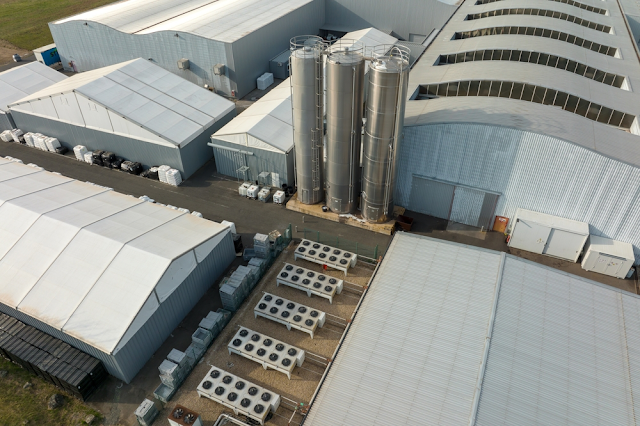Cost Saving Benefits In Pre Engineered Steel Buildings
In today's competitive business landscape,
cost efficiency plays a crucial role in determining the success of any venture.
Whether you're planning to construct a warehouse, industrial facility, or
commercial building, finding cost-effective solutions without compromising on
quality and durability is paramount. This is where pre-engineered buildings (PEBs) come into the picture. PEBs have
gained popularity in recent years due to their ability to offer significant
cost savings compared to traditional construction methods. In this blog post,
we will explore the various ways PEBs can help you save money while delivering
exceptional value.
- Streamlined Design and Construction Process
One of the significant advantages of pre-engineered steel buildings is their
streamlined design and construction process. PEBs are engineered and
manufactured off-site, using advanced software and computer-aided design (CAD)
technology. This eliminates the need for extensive on-site design work,
reducing the overall project timeline. The faster construction process directly
translates into lower labor costs, as fewer man-hours are required to erect the
building framework.
- Material Optimization
PEBs are designed with precision, ensuring
optimal use of construction materials. Steel, which is the primary material
used in PEBs, is lightweight, durable, and highly recyclable. The efficient use
of steel components in the design reduces material waste during the
manufacturing process. Additionally, steel structures can be easily modified or
expanded, minimizing future construction costs if your business needs change.
This material optimization contributes to cost savings by reducing both
material and labor expenses.
- Energy Efficiency
Pre-engineered
buildings are well-known for their energy-efficient
features. These buildings can be designed to incorporate insulation systems,
natural lighting solutions, and efficient HVAC systems. The insulation helps to
maintain consistent indoor temperatures, reducing the reliance on heating and
cooling equipment. Moreover, PEBs can integrate renewable energy sources such
as solar panels, further reducing energy costs. Over time, these
energy-efficient features can result in significant savings on utility bills.
- Minimal Maintenance Requirements
PEBs are engineered to be low-maintenance
structures. The steel components used in PEBs are resistant to corrosion,
pests, and weathering. This inherent durability significantly reduces the need
for repairs and maintenance compared to traditional buildings. With fewer maintenance
requirements, you can save money on ongoing upkeep and focus on your core
business operations.
- Cost Predictability
Traditional construction projects often
face budget overruns due to unforeseen circumstances, such as design changes,
material price fluctuations, or construction delays. In contrast, pre-engineered buildings provide cost
predictability. The detailed engineering and design process ensures accurate
cost estimation upfront, allowing you to plan your budget with confidence. This
predictability minimizes the risk of unexpected expenses, enabling better
financial management throughout the project.
- Financial Benefits
Choosing a pre-engineered building can
bring financial benefits beyond construction cost savings. Banks and financial
institutions often view PEBs as lower-risk investments due to their structural
integrity and durability. This perception may lead to lower interest rates and
better financing options for your project, ultimately reducing the overall cost
of ownership.
Conclusion
Pre-engineered
buildings offer a cost-saving edge over traditional
construction methods, making them a preferred choice for businesses looking to
optimize their construction budgets. From streamlined design and construction
processes to material optimization, energy efficiency, minimal maintenance
requirements, and cost predictability, PEBs provide tangible financial benefits
throughout the building's lifecycle. By harnessing the advantages of PEBs, you
can achieve significant cost savings without compromising on quality,
durability, or flexibility. When considering a construction project, it's worth
exploring the potential cost savings and long-term value that pre-engineered steel buildings can
deliver.



Comments
Post a Comment